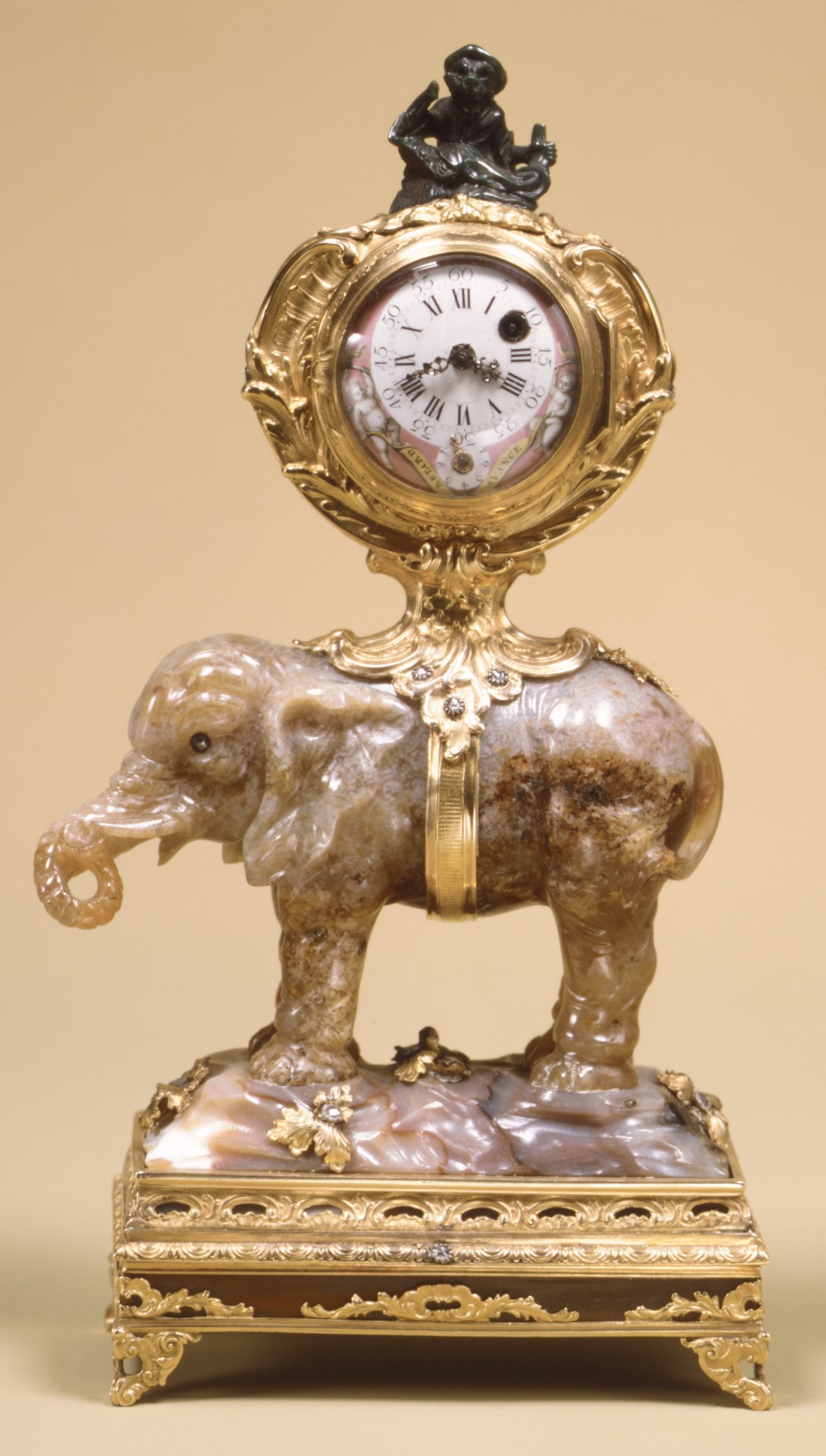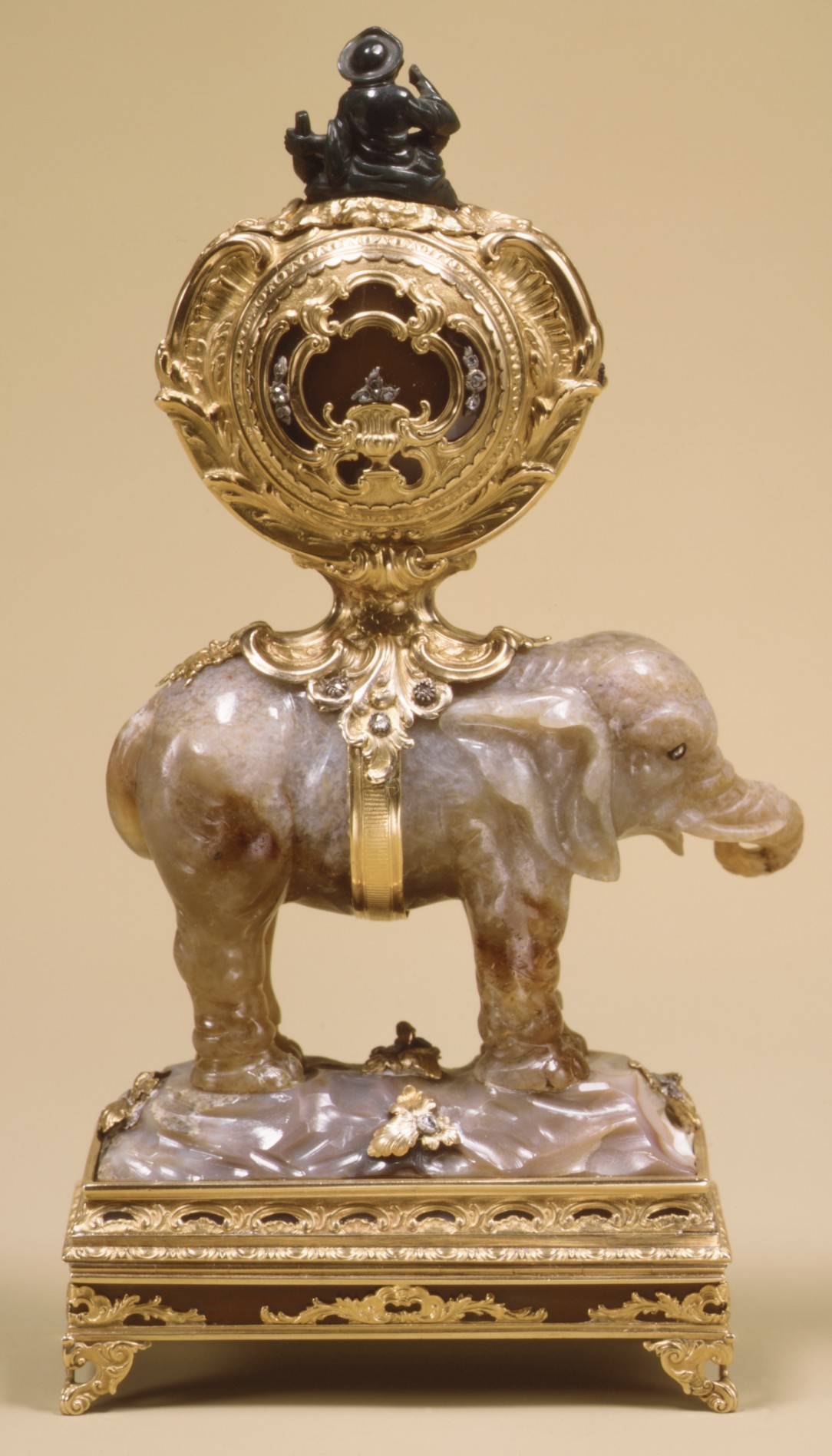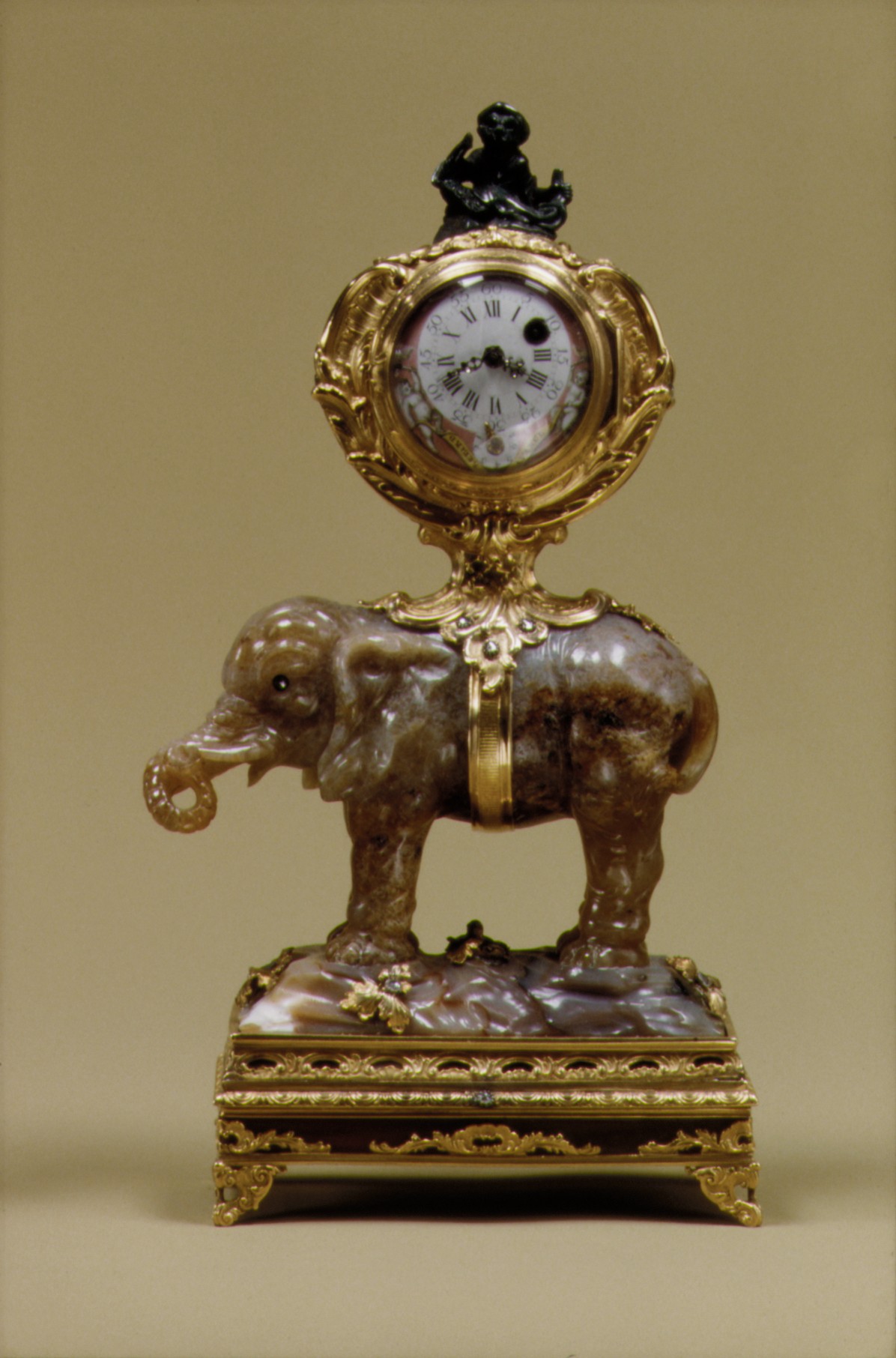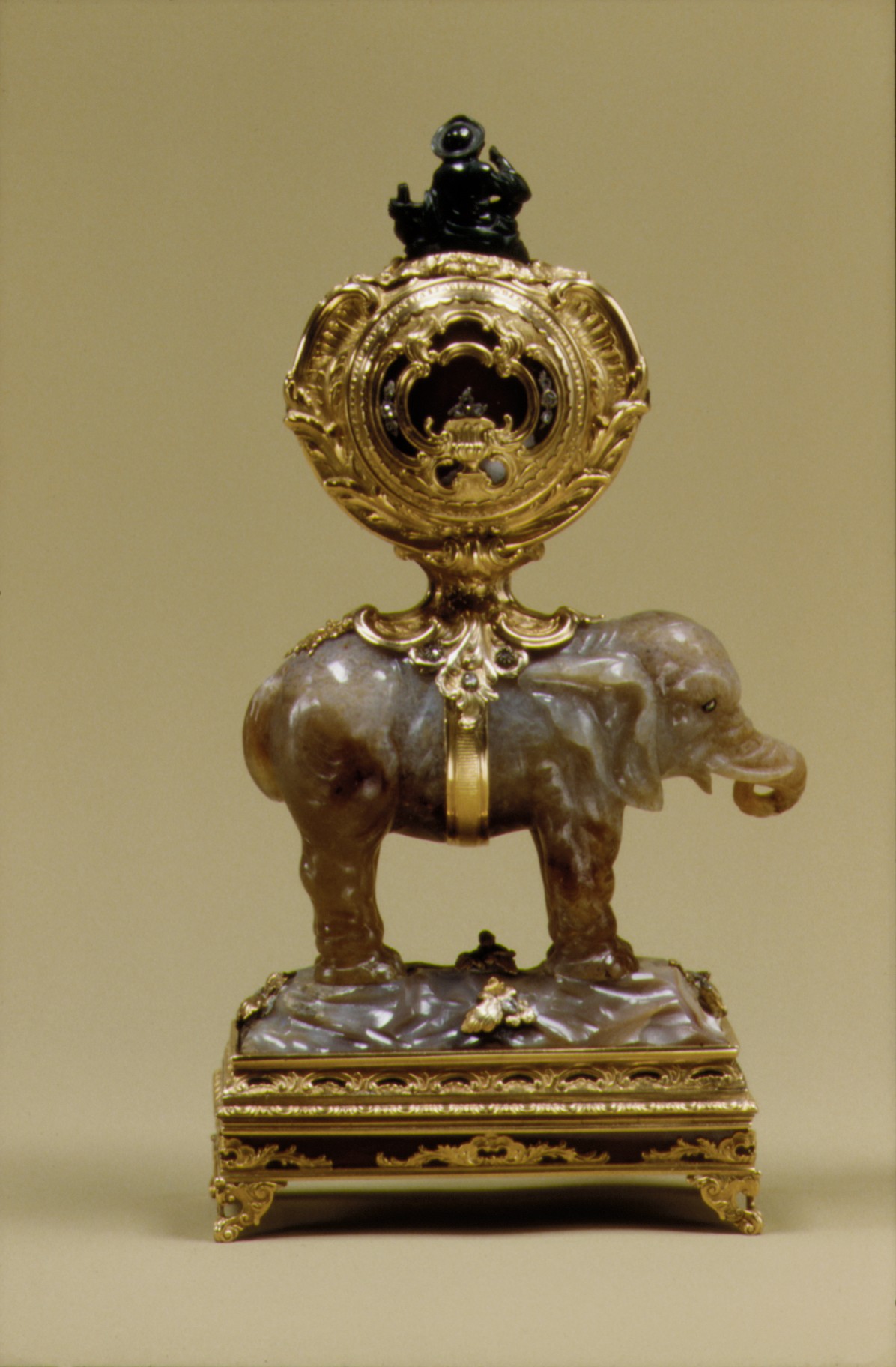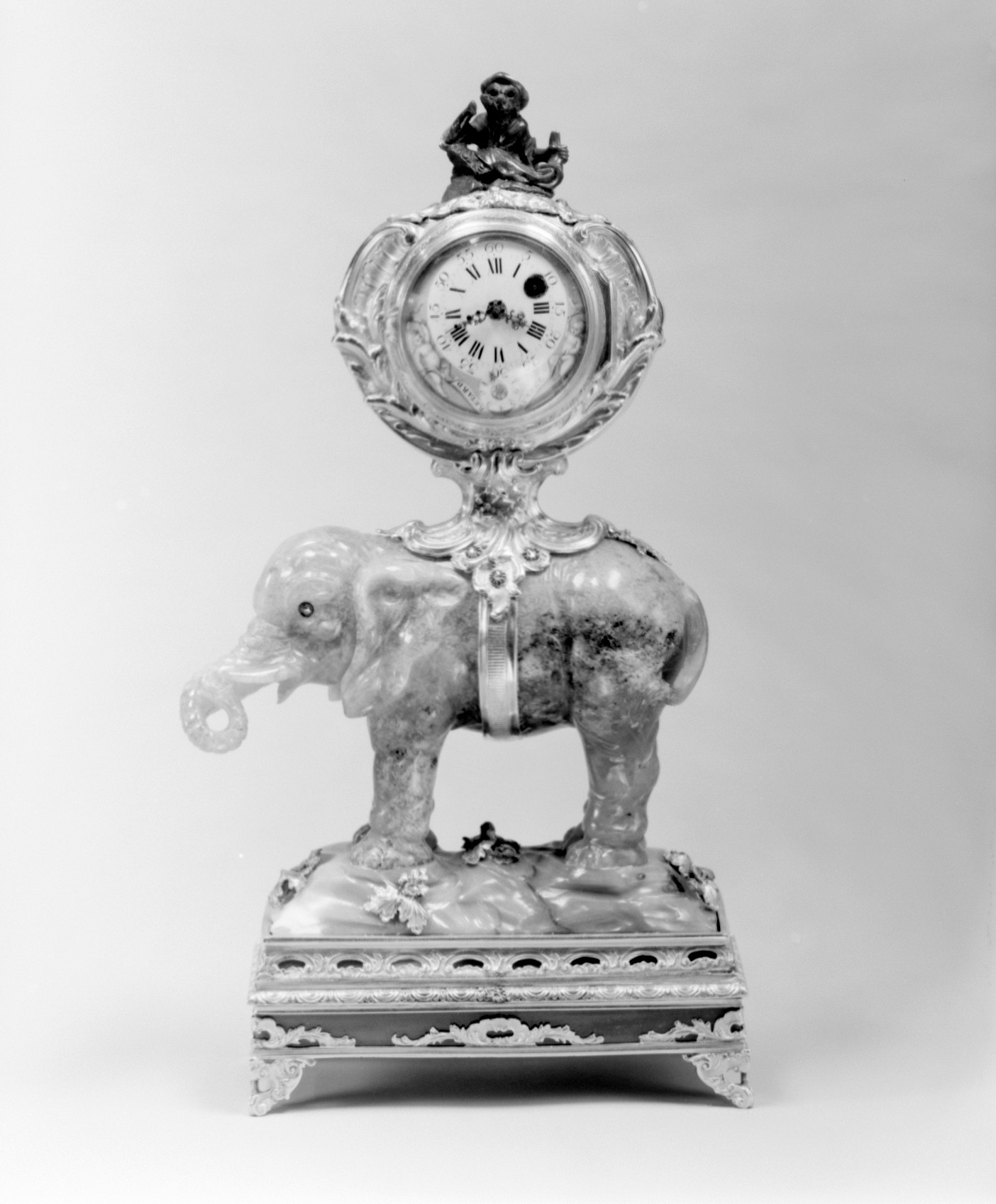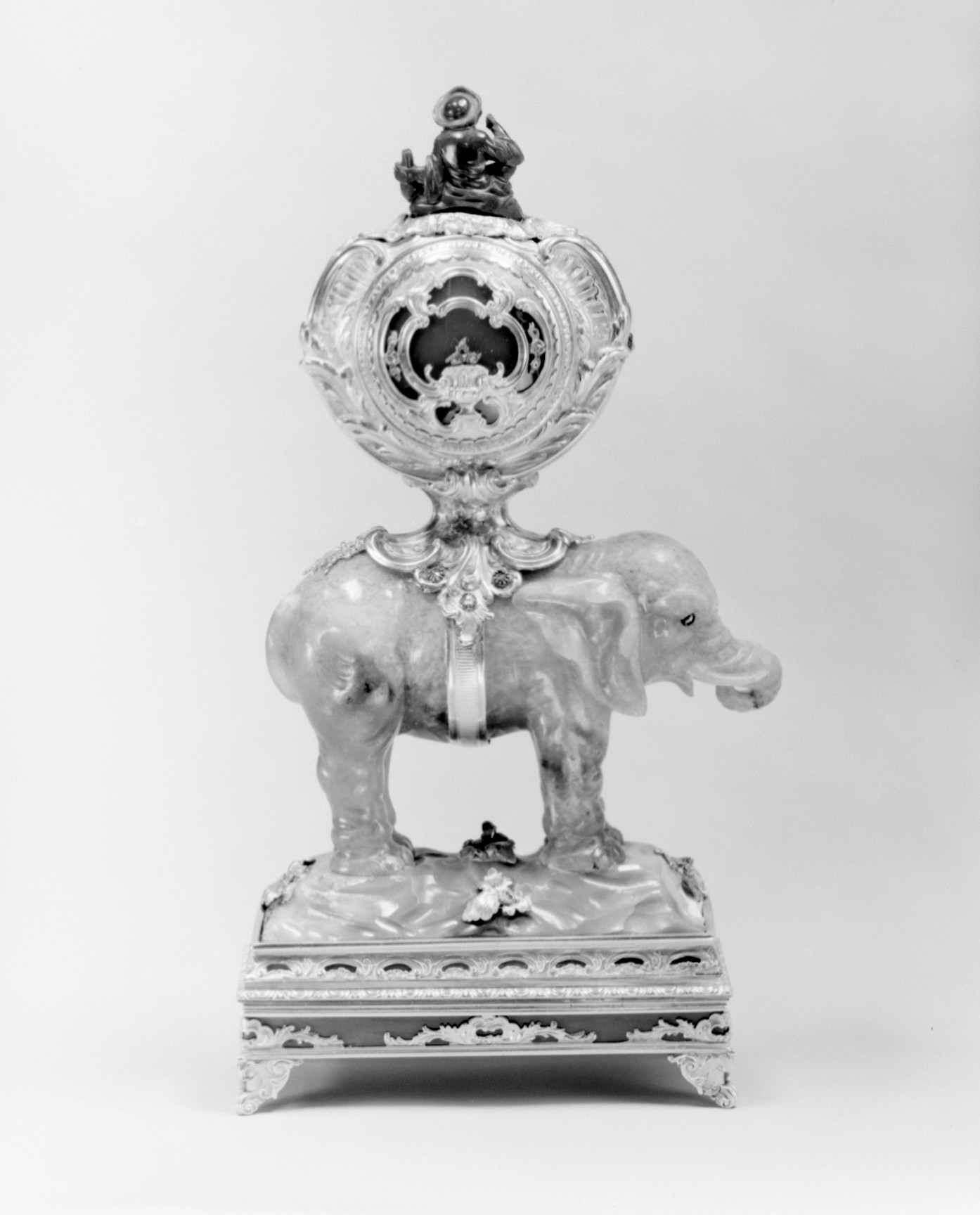Miniature clock in the form of an elephant supporting a watch case
Hardstones—which were found in abundant supply and variety in the mines of Saxony and Silesia—are the focal element in much German goldsmiths' work and galanterien of the eighteenth century. The carving of stones into naturalistic and zoomorphic forms has been traditionally associated with Dresden, where the court jeweler Johann Melchior Dinglinger (1664–1731) produced ornamental figures of great skill and inventiveness composed of jewels, hardstones, and gold; such pieces are invariably unmarked, however, and their origin cannot be considered certain. In addition to this piece only one other comparable model is known, an agate bull supporting a watch, also in the Museum's collection (48.185.1), evidently from the same workshop. The bull clock is about fifteen years earlier in date and somewhat less finished in several details of carving and goldsmithing, but it shares with this piece, in addition to the basic design, such devices as the leaf-strewn base and hinged compartment.
Although made for this piece, the watch does not appear to be original to it; the unusual placement of the numbers on the dial and the pastel enameling indicate a date of about 1770.
Due to rights restrictions, this image cannot be enlarged, viewed at full screen, or downloaded.
This artwork is meant to be viewed from right to left. Scroll left to view more.


